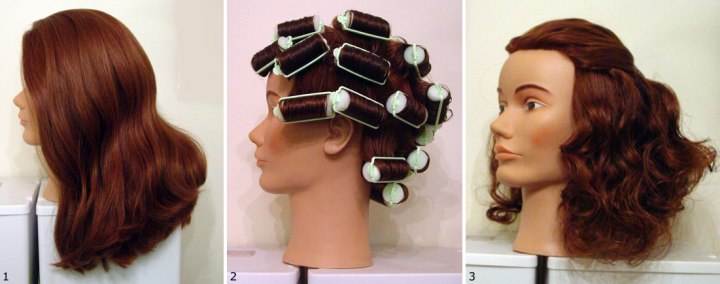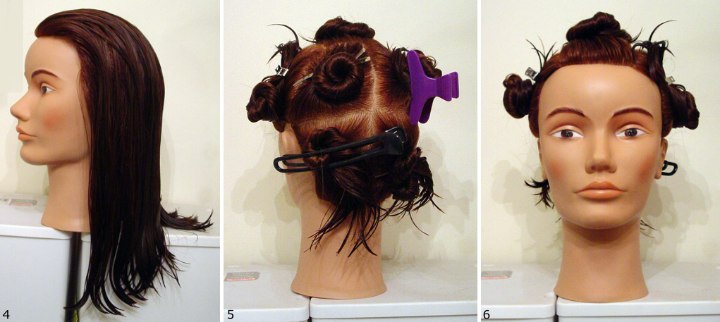Layers of Style

There is a significant difference in styling hair with and without layering. Most blunt-cut and mostly-blunt-cut hairstyles, when curled, tend to show increasing bulk, particularly at the ends of the hair where the curl is strongest. To provide a clearer example, I have prepared a small demonstration.
What follows are examples of two separate roller sets styles created on the same manikin. The key difference is that the manikin’s hair was cut between the two styling sessions from a blunt cut with only slight beveling at the ends of the hair to a long-layered style. The purpose is to provide visible evidence of the difference achieved by incorporating layering into the hair styling process.
This is our manikin, which evidently lacks significant layering in the hair's length. The hair was cut into this style by pulling it back to a point behind the head and trimming it at a 45-degree angle. This creates an angled weight line and beveling at the back of the hair.

Photo 2:
We shampooed the hair using a 2-in-1 shampoo and conditioner formula, then towel-dried the hair by wrapping the manikin's head turban-style and allowing it to absorb the moisture for a few minutes. Next, using a wide-tooth comb, we separated sections of hair and began wrapping them in sponge rollers as shown.
We started at the front center area and worked our way around the manikin’s hair, creating a freestyle roller design. The manikin was then set aside, and the hair was allowed to dry fully.
Photo 3:
Now that the hair is dry, we removed the rollers and gently brushed out the hair. The blunt cut resulted in voluminous curls, creating a "pyramid" look as the hair ends expanded more fully with the curl. The photo displays the top portion of the hair pulled back and secured with a clasp, yet the pyramiding effect remains evident.
You will also notice that the amount of curl becomes more pronounced as you move further down the length of the hair shaft. The ends of the hair are much curlier compared to the scalp area. This effect is partly due to the weight of the hair, which pulls the curl out of the hair sections closer to the scalp.
Photos 4, 5 & 6:

Once again the hair was washed and combed out in preparation for being cut. The manikin’s hair was sectioned into the standard seven-section parting for cutting.
You can see that this parting breakdown features top right and left sides from just behind the ear forward as separate sections, while the back of the head (the crown and nape areas) are divided by two perpendicular parting lines into four sections of roughly equal size.
Continue reading ...